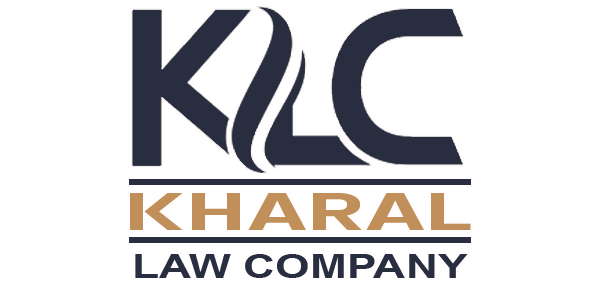
The truck’s book value is $7,000, but nothing is received for it if it is discarded. The company breaks even on the disposal of a fixed asset if the cash or trade-in allowance received is equal to the book value. It also breaks even of how to record disposal of asset an asset with no remaining book value is discarded and nothing is received in return. The monthly accounting close process for a nonprofit organization involves a series of steps to ensure accurate and up-to-date financial records.

Actual proceeds from sale of the used asset turned out to be $0.5 million. Its cost can be covered by several forms of payment combined, such as a trade-in allowance + cash + a note payable. Equipment that cost $6,000 depreciates $1,200 on 12/31 of each year.
How to record the disposal of assets
The balance sheet must be updated repeatedly to reflect the removal of the assets. The income statement also reflects any gains or losses recognized from the disposal and the impact it has on the net income. The journal entry for the disposal of fixed assets varies depending on the ways of disposal.
- Asset disposal is removing assets that are no longer needed or beneficial to a company or individual.
- In terms of the financial statements, any losses that are treated like an expense would be debited to decrease the value.
- The equipment will be disposed of (discarded, sold, or traded in) on 4/1 in the fourth year, which is three months after the last annual adjusting entry was journalized.
- When an asset is sold for less than its Net Book Value, we have a loss on the sale of the asset.
- Calculations can be complex and require a thorough understanding of capital gains principles and calculations and the appreciation of tangible goods over time.
- As the fixed asset is fully depreciated, thus, the company needs to derecognize the assets from its Balance Sheet.
The business receives cash of 4,500 for the asset, and makes a gain on disposal of 1,500. As can be seen the gain of 1,500 is a credit to the fixed assets disposals account in the income statement. Recording the journal entry for the disposal of fixed assets in your books is a necessary process that can be done quickly and easily with the help of accounting software.
Situation 3. The business sells the fixed assets for 4,500
For example, a gain on the sale of an asset increases taxable income, potentially raising the company’s tax liability. Conversely, a loss on disposal can reduce taxable income, providing a tax benefit. The calculation of gain or loss on the disposal of an asset is a straightforward process that hinges on the comparison between the asset’s net book value and the proceeds from disposal. The net book value is ascertained by subtracting the accumulated depreciation from the asset’s historical cost. This figure represents the asset’s carrying amount on the balance sheet up to the point of disposal. The proceeds from disposal, meanwhile, are the funds or the fair value of any other compensation received in exchange for the asset.
- You want your accounting records to reflect the true status of your business’s finances, so don’t wait until tax season to start thinking about depreciation.
- It ensures that the financial outcomes of asset disposals are transparently communicated to stakeholders.
- It is an important concept because capital assets are essential to successful business operations.
- Contrary, gains would be credited to reflect the money made from the disposal.
- When the assets are old, wear out or become obsolete, the company would consider disposing of the book.
- Tax authorities require businesses to report the financial outcomes of asset disposals, which can alter the company’s taxable income for the year.
Then debit its accumulated depreciation credit balance set that account balance to zero as well. Debit Cash or the new asset if either is received in exchange for the one disposed of, if applicable. Finally, debit any loss or credit any gain that results from a difference between book value and asset received. Subsequent to debiting accumulated depreciation, the asset account itself is credited for the original historical cost. Continuing with the previous example, a credit entry of $50,000 would be made to the machinery account, which corresponds to the asset’s historical cost. This credit reflects the disposal of the asset and serves to balance the debit made to the accumulated depreciation, effectively reducing the asset’s book value to zero.
Disposal of Fixed Assets
When an asset reaches the end of its useful life and is fully depreciated, asset disposal occurs by means of a single entry in the general journal. The accumulated depreciation account is debited, and the relevant asset account is credited. When a company removes a long-term asset from its accounts it’s called disposal, and has impacts on gains on disposals and accumulated depreciation. This can be a highly material transaction, so knowing how it works and how’s it recorded is useful for financial professionals.
Some examples of disposing of an asset are sales, scrapping, or donations. An asset is a company possession that aids in generating profit in daily operations. Assets involved in this process are generally long-term, including heavy machinery, vehicles, or buildings. Eric is an accounting and bookkeeping expert for Fit Small Business. He has a CPA license in the Philippines and a BS in Accountancy graduate at Silliman University. Some assets are truly worthless when they’re no longer of use to your business.
Disposal of Fixed Assets Journal Entry
Although in terms of debits and credits a gain account is treated similarly to a revenue account, it is maintained in a separate account from revenue. In that way the results of gains are not mixed with operations revenues, which would make it difficult for companies to track operation profits and losses—a key element of gauging a company’s success. To deal with the asset disposal we first need to calculate its net book value (NBV) in the accounting records. Accordingly the net book value formula calculates the NBV of the fixed assets as follows. When there is a loss on the sale of a fixed asset, debit cash for the amount received, debit all accumulated depreciation, debit the loss on sale of asset account, and credit the fixed asset.
Wanda Tells Creditors It’s Finalizing an Asset Disposal – Bloomberg
Wanda Tells Creditors It’s Finalizing an Asset Disposal.
Posted: Thu, 20 Jul 2023 07:00:00 GMT [source]
Where an asset has zero net book value and zero salvage value, no gain or loss arises on its disposal. If an asset reaches the end of its life or is no longer used, recording the disposal of the asset is important in making sure your accounting records are up to date. The first step is to determine the book value, or worth, of the asset on the date of the disposal. Book value is determined by subtracting the asset’s Accumulated Depreciation credit balance from its cost, which is the debit balance of the asset. If an asset has been depreciated for tax purposes at rates faster than the economic depreciation, a portion of the gain on disposal may be treated as recaptured depreciation and taxed at higher rates. This recapture mechanism ensures that the tax benefits received from accelerated depreciation are balanced if the asset is later sold for a value above its depreciated tax basis.


